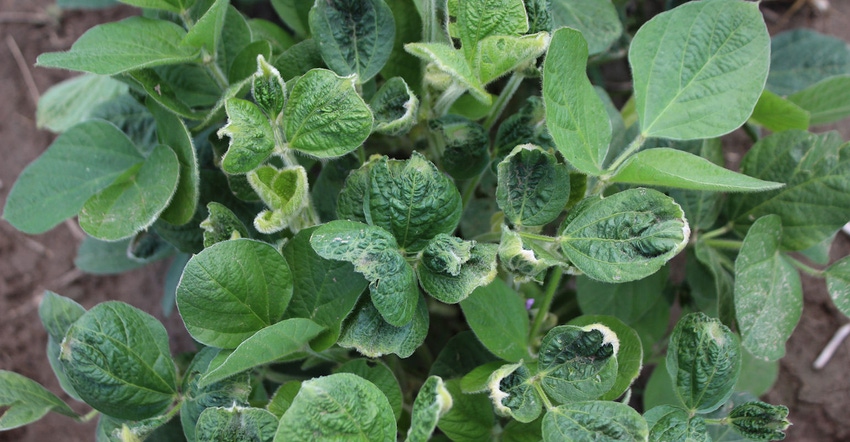EPA changes label requirements for dicamba products
Agreement reached with Monsanto, BASF and DuPont to allow for continued dicamba use by farmers in 2018 under specific restrictions.

The Environmental Protection Agency has reached an agreement with Monsanto, BASF and DuPont on measures to further minimize the potential for drift to damage neighboring crops from the use of dicamba formulations used to control weeds in genetically modified cotton and soybeans.
The updates, which were voluntarily proposed by those in the industry and are supported by EPA, include mandatory training, new recordkeeping requirements and a Restricted Use Pesticide (RUP) designation, which will limit sale and use to certified applicators or those acting under their supervision.
New requirements for the use of dicamba "over the top" (application to growing plants) will allow farmers to make informed choices for seed purchases for the 2018 growing season, EPA said.
"Today's actions are the result of intensive, collaborative efforts, working side by side with the states and university scientists from across the nation who have firsthand knowledge of the problem and workable solutions," EPA Administrator Scott Pruitt said. "Our collective efforts with our state partners ensure we are relying on the best on-the-ground information."
In a series of discussions, EPA worked cooperatively with states, land-grant universities and pesticide manufacturers to examine the underlying causes of recent crop damage in the Farm Belt and Southeast. EPA carefully reviewed the available information and developed tangible changes to be implemented during the 2018 growing season. This is an example of cooperative federalism that leads to workable national-level solutions, EPA said in a statement.
Manufacturers have voluntarily agreed to label changes that impose additional requirements for over the top use of these products next year, including:
Classifying products as "restricted use," permitting only certified applicators with special training, and those under their supervision, to apply them;
Dicamba-specific training for all certified applicators to reinforce proper use;
Requiring farmers to maintain specific records regarding the use of these products to improve compliance with label restrictions;
Limiting applications to when maximum wind speeds are below 10 mph (from 15 mph) to reduce potential spray drift;
Reducing the times during the day when applications can occur;
Including tank cleanout language to prevent cross-contamination, and
Enhancing susceptible crop language and recordkeeping with sensitive crop registries to increase awareness of risk to especially sensitive crops nearby.
Manufacturers have agreed to a process to get the revised labels into the hands of farmers in time for the 2018 use season. EPA will monitor the success of these changes to help inform its decision whether to allow the continued over the top use of dicamba beyond the 2018 growing season. When EPA registered these products, it set the registrations to expire in two years so it could change the registration, if necessary.
In a statement, Monsanto said it supports the product label updates. In 2017, soybean and cotton seeds with the dicamba technology were planted on more than 26 million acres in the U.S.
“The vast majority of farmers using our low-volatility dicamba product have had tremendous success in 2017 both with on-target applications and good weed control,” Monsanto global regulatory lead Ty Vaughn said.
“Based on the science behind our low-volatility dicamba product and learnings from the 2017 season, we are confident the required training and record keeping can address the main causes of off-target movement,” Vaughn added. “We want to stress how important it is that farmers use products approved by the EPA for use over the top of dicamba-tolerant crops and use them in accordance with all label requirements.”
Beyond the label enhancements, Monsanto is taking a variety of steps to help customers use XtendiMax successfully in 2018, including:
Evolving and tailoring training based on what was learned from 2017.
Working with its team at The Climate Corp. to help farmers more easily identify problematic weather.
Distributing spray nozzles that comply with the product label at no cost.
Setting up a technical support call center to help customers easily access information on best practices and application requirements.
About the Author(s)
You May Also Like





